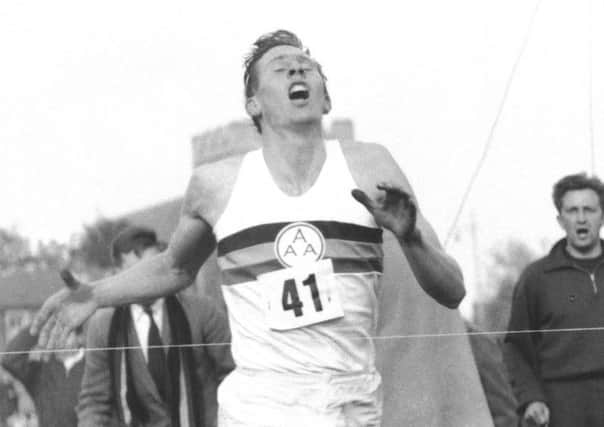Tribute: Sir Roger Bannister's casual dash to immortality


We were a decade away from the Beatles and George Best but the pace of social change, powered by a growing sense of optimism, was accelerating, and sport, aided by the dawn of television, would become something consumed on the sofa as well as played.
To today’s touch-screen kids, the cine film repeats of Bannister hammering around the Iffley Road track with his pre-lycra togs flapping in the breeze and watched by short-haired types in ties, must appear like some kind of weird, genre fantasy.
Advertisement
Hide AdAdvertisement
Hide AdBannister was an Oxbridge academic pursuing a serious medical career. He didn’t take up athletics until he went to university but he was good enough to represent Britain at the 1952 Olympics, finishing one place out of the medals in the 1,500m in a British record time, and at the 1954 Commonwealth Games, where he claimed gold in the mile.
Running the imperial four laps in sub four minutes was the athletic equivalent of reaching the south pole, or the moon. The chase had been on, led by Wes Santee in the United States and John Landy in Australia, and there was very much a sense that Bannister was running as much for his country as himself.
Though Bannister brought his erudition to bear on the task, understanding the physical demands made on the body from a scientific perspective and devising a training regime that would propel him into legend, it remained very much a casual assault on a mythical athletic landmark compared to the marginal gain monsters of today.
I’m grateful to Keith Burge, ex-chairman of the Institute of Economic Development, for this evocative summary of the epoch via Twitter. “On the 6th of May 1954 Sir Roger Bannister did a shift at St Mary’s Hospital in London, then sharpened his running spikes in the hospital lab, took the train to Oxford, grabbed some lunch, walked to the track and then ran a mile in under four minutes.”
Marvellous. A crowd of 1,500 people crammed into the Oxford University athletics track to bear witness to the attempts. Bannister, 25, was led out first by Chris Brasher and then Chris Chataway, all three in searingly simple white vests bearing the iconic horizontal stripes and Three-As badge.
At the end of the first lap Bannister, pushed on by adrenalin and the sound of history calling, thought the pace was too slow and urged Brasher to go quicker. Brasher was in fact travelling at a fair clip and later explained he was on the limit and could not have gone any faster.
Chataway, a world-class 5,000m runner, took up the pace before Bannister strode out on the final lap, collapsing across the line exhausted in a time of 3m:59.4s. For the benefit of heroes that would follow, Bannister summed up the business of sporting conquest thus: “The man who can drive himself further once the effort gets painful is the man that will win.”